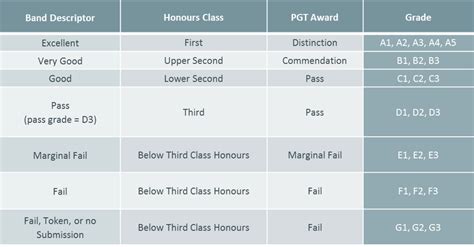APUS Grading Scale: A Comprehensive Guide to Student Assessment

The American Public University System (APUS) employs a comprehensive grading scale to evaluate student performance. This scale ensures consistency in assessment and provides students with a clear understanding of their academic progress. This guide will delve into the nuances of the APUS grading scale, providing insights into its components, applications, and implications for student success.
The APUS grading scale consists of the following components:
Letter Grades
| Letter Grade | Percentage Range | GPA Equivalent |
|---|---|---|
| A | 93% – 100% | 4.0 |
| A- | 90% – 92% | 3.7 |
| B+ | 87% – 89% | 3.3 |
| B | 83% – 86% | 3.0 |
| B- | 80% – 82% | 2.7 |
| C+ | 77% – 79% | 2.3 |
| C | 73% – 76% | 2.0 |
| C- | 70% – 72% | 1.7 |
| D+ | 67% – 69% | 1.3 |
| D | 63% – 66% | 1.0 |
| D- | 60% – 62% | 0.7 |
| F | 0% – 59% | 0.0 |
Percentage Grades
In addition to letter grades, APUS also provides students with percentage grades. These grades provide a more precise indication of student performance and are often used for internal assessment purposes.
Grade Point Average (GPA)
The GPA is a numerical representation of a student’s overall academic performance. It is calculated by taking the average of all the letter grades earned, weighted by their respective credit hours. The APUS GPA scale ranges from 0.0 to 4.0, with 4.0 representing the highest possible GPA.
The APUS grading scale has several important applications in student assessment:
1. Student Performance Evaluation
The grading scale provides students with a clear understanding of their academic progress and identifies areas where they need improvement. It allows them to make informed decisions about their study habits and course selection.
2. Course Instructor Assessment
The grading scale enables course instructors to assess their teaching effectiveness and make adjustments to their instructional methods as needed. It also provides objective evidence of student achievement for faculty evaluation purposes.
3. Credit Transfer and Degree Completion
The APUS grading scale is recognized by other accredited institutions, facilitating the transfer of credits and the completion of degree programs. It ensures that students receive the appropriate academic recognition for their accomplishments.
4. Scholarship and Financial Aid Eligibility
The grading scale is used to determine student eligibility for scholarships and financial aid. Students who maintain a high GPA are often eligible for additional financial support, which can help them achieve their educational goals.
To ensure accurate and fair assessment, it is important to avoid the following common mistakes:
1. Grade Inflation
Grade inflation occurs when instructors assign grades that are consistently higher than what students have earned. This practice undermines the integrity of the grading scale and devalues academic achievements.
2. Grade Deflation
Grade deflation occurs when instructors assign grades that are consistently lower than what students have earned. This can create a sense of frustration and discouragement among students and hinder their academic progress.
3. Subjectivity
Grades should be based on objective criteria and not influenced by personal biases or preferences. Instructors must be fair and consistent in their grading practices to ensure equitable treatment for all students.
The APUS grading scale plays a crucial role in ensuring the quality and integrity of the educational experience. It provides transparency in student assessment, promotes accountability, and establishes a common standard for academic achievement. By utilizing the grading scale effectively, APUS can empower students to reach their full academic potential and prepare them for success in their chosen fields.
The APUS grading scale offers numerous benefits to students, course instructors, and the university as a whole. Some key benefits include:
1. Student Benefits
- Clear understanding of academic progress
- Objective and fair assessment
- Motivation to achieve higher levels of performance
- Eligibility for scholarships and financial aid
2. Course Instructor Benefits
- Assessment of teaching effectiveness
- Objective evidence of student achievement
- Fair and consistent grading practices
3. University Benefits
- Quality assurance in student assessment
- Maintenance of academic standards
- Recognition of student achievements
- Alignment with industry best practices
The APUS grading scale is an essential element of the university’s academic assessment system. It provides a comprehensive and standardized approach to student evaluation, promoting transparency, accountability, and academic integrity. By understanding the components, applications, and benefits of the grading scale, students can maximize their academic performance and achieve their educational goals.
